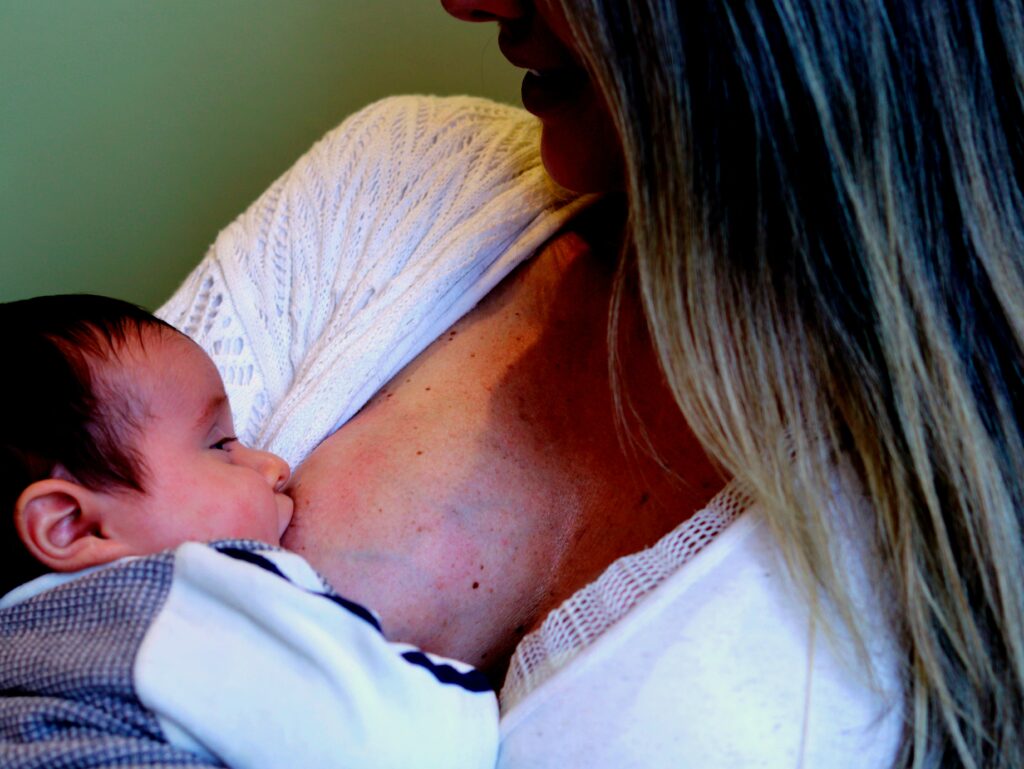 As Certified Breastfeeding Counselors (CBC), we work with breastfeeding babies and children in all stages. However, we are likely to get the most questions around the newborn stage given it’s the start of a new breastfeeding relationship. Finding the best breastfeeding positions for newborns can be a challenge for new parents.
As Certified Breastfeeding Counselors (CBC), we work with breastfeeding babies and children in all stages. However, we are likely to get the most questions around the newborn stage given it’s the start of a new breastfeeding relationship. Finding the best breastfeeding positions for newborns can be a challenge for new parents.
As a CBC, helping parents problem solve and providing education is an important part of your role. In some cases, a mother or baby just being uncomfortable can have a big impact on feeding. Given that newborns feed for up to sixteen hours in the early days, being comfortable is important.
Choosing Comfortable Positions for Breastfeeding
After birth, a mother’s abdominal muscles are unstable. If she had a vaginal birth, she may be experiencing pelvic floor discomfort, perineal pain, and more. If she had c-section, she will have abdominal and pelvic pain, as well as incision pain.
Getting comfortable can be difficult in the early days of healing. As a CBC, helping a new mother problem solve to find a comfortable position is an important part of breastfeeding initiation support.
Breastfeeding is a physiological process involving hormones, and supply and demand. When a mother is uncomfortable or experiencing pain, it can interfere with oxytocin, the hormone which encourages letdown. If she’s in pain, she may be less likely to feed as frequently and may opt for trying a pacifier or bottle to get a break from latching.
Here are five breastfeeding positions you can recommend to your clients:
#1: Traditional Cradle Hold With Support
Holding baby in the traditional cradle position tends to be a go to for many new parents. Often because it is the only position, they are aware of. This can be a great position, but it can be challenging to do with good posture.
Using a breastfeeding pillow, or any pillow, for support can make this position more comfortable. For mothers who have had a c-section, this position could present some challenges as the pillow or baby might put pressure on the incision.
#2: Football Hold With or Without Pillow Support
For women who have had a c-section, this position is a great alternative to the traditional cradle hold. Baby is held under the arm on the side of the mother. Their head is supported in the hand, body on the forearm.
Picture a football player with the football tucked under their arm as they run down the field. This is the idea of the football hold. It’s great for smaller babies as mom has an easier view to observe the latching. Tucking a pillow under mom’s arm, especially toward the front where baby’s head is supported, can help both relax and be comfortable.
#3: Cross-Cradle Position
Like the cradle position, baby is in front of mom. However, rather than supporting baby with the arm of the side you’re feeding from, you hold them with the opposite arm. This can be helpful for those needing to assist baby more with latching, and it makes it easier to hold them higher up.
After baby is latched well, tucking a pillow under mom’s arm can provide additional support so she can relax a bit while feeding.
#4: Side-Lying Breastfeeding Position For Newborns
This feeding position is exactly as it sounds. Mom and baby are on their sides, facing each other, to feed. Baby and mom should be tummy-to-tummy, meaning baby’s head and body should be on their side. Side-lying is an excellent position for women experiencing pelvic floor or perineal discomfort, and for women who have had c-sections.
This position allows physical rest while baby feeds. It’s important that those using side-lying are on a firm surface. In the event mom accidentally dozes off, this is an unsafe position on the couch.
Experts actually recommend side-lying on a firm mattress, without blankets or pillows near baby, if a mother is very tired and worried she may doze off. Falling asleep with baby in arms presents a fall risk. Falling asleep on a couch, glider, or other surface presents an entrapment or suffocation risk.
#5: Laid Back Feeding
This position is actually really helpful for a baby struggling to latch. This position, especially while skin-to-skin, activates baby’s natural feeding instincts. In fact, if you place a baby in this position they will often wiggle and bob around looking for the nipple on their own.
In this position, mom is laid back typically on pillows. This position is easy while still in the hospital due to the adjustable beds. Baby is placed on mom’s chest and either positioned at the nipple or allowed to seek on their own.
Additional Positioning Tips
As mentioned above, comfort is important. A mother should always bring baby to her breast, not her breast to baby. Doing this prevents moms from hunching over which can cause significant strain with frequent feedings.
A mom’s back should always be well supported. Unless in bed, her feet should be firmly planted comfortably on the ground, a stool, or supported by crossing her legs onto the chair.
As a CBC, you can help your clients try a variety of positions until they find what is most comfortable for them and their baby.